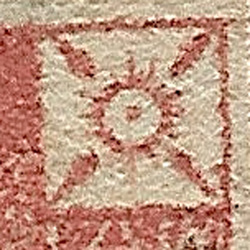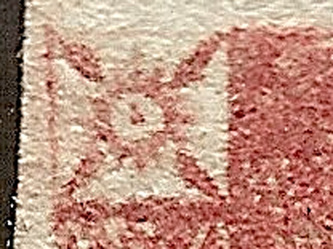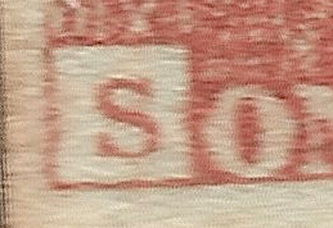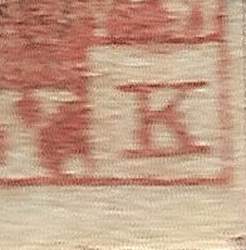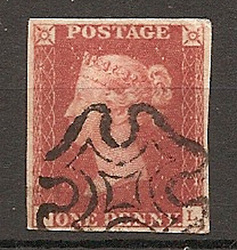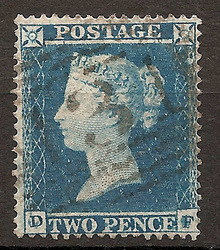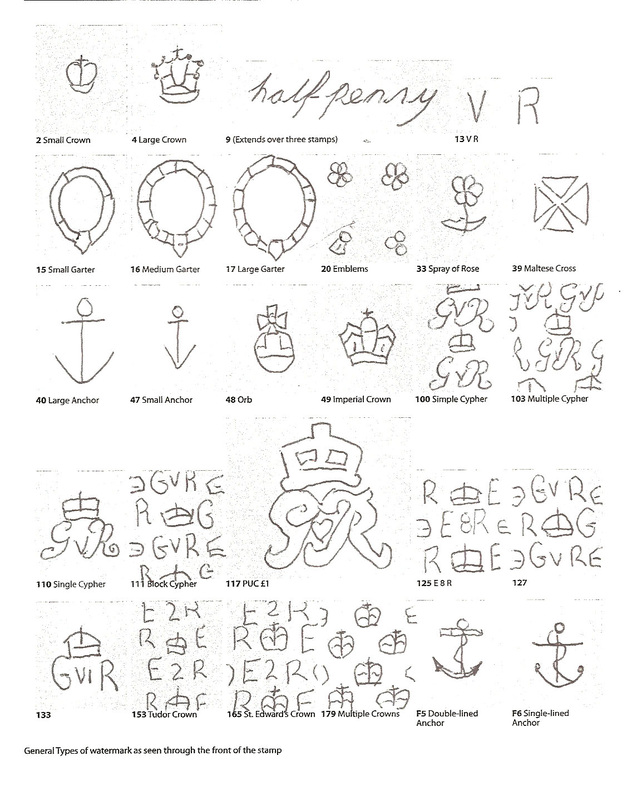Free Stamp Valuations on any stamps or stamp collection.......
All-originals you local stamp and coin dealer where you can sell all your collectables with confidence.
So why not turn them into cash with a name you can trust.
Stamp valuations coin valuations are free with no obligation to sell.
All-originals you local stamp and coin dealer where you can sell all your collectables with confidence.
So why not turn them into cash with a name you can trust.
Stamp valuations coin valuations are free with no obligation to sell.
COLLECTING GREAT BRITAIN STAMPS

Collecting Great Britain Stamps is more popular by the day amongst middle to retirement ages. Great Britain has many areas of interest from single stamps and sets to BOB back of the book, (fiscal's revenues Cinderella's), Postal History, Postmarks FDC covers, Presentation Packs, and so on.
I think that I am reasonably well qualified in the earlier issues of Great Britain, from Queen Victoria QV to George VI. Though by no means an expert? These earlier stamps have much more variety of issues including shades perforations watermarks different printers errors and so on.
By far the most interesting and valuable part to collecting GB stamps are Queen Victoria and Edward VII. Later issues from King George v will be dealt with on separate pages.
Most of the QV plates are available quite cheaply on eBay and from as little as a few ££££'s. Please think carefully about the quality of the stamp. CDS are most desirable, but dearer. And I recommend that you don't go for second best, it's much more rewarding looking at top quality. The key high values 2/=6d to £5 are the most expensive of these stamps.
Edward VII had 3 printers of the stamps and different papers. De La Rue, Harrison & Sons and Somerset House. Papers were ordinary and chalk surfaced paper and finally Dickenson's Coated Paper. All had the imperial crown watermark. More details follow.
Areas of Interest
Great Britain Stamps
Queen Victoria Stamps
there are several categories.
.Line engraved 1840 to 1879
Penny Blacks Two Pence Blues Penny Reds
These can be split into catagories
!. Plates
2. Shades
3. Dies
4. Alphabets
5. Perforations
6. Watermarks
Penny Blacks. There are only 12 plates for the penny black, and with the help of pictures from Website. website maltese cross plating project every stamp and plate position is pictured. Just match up the bottom corner letters to the list of check letters on the list, a picture will then show all 12 plates. Note the "O" flaw of the one penny (as printed at the bottom of each stamp) appears in the later plates, but not on plate 11. This is due to plate wear.
Penny Reds There are many more plates to the penny red. Starting with Sg 7 printed from the black plates. Sg 8 was next and plates 12 to 177 were used. All these are imperf, with both alphabets I and II. etc. on the last penny reds printed, the plates 71 to 225 with plates engraved in the margins of the stamps.
Shades Shades of the line engraved stamps. The penny black had 3 shades. Intense black, black and grey black. The 2d two pence blue had several. Deep full blue blue, pale blue and violet blue. The peeny red had several shades as well starting with red brown, red brown on very blued paper, pale red brown (caused by plate wear), deep red brown, lake red and orange brown.
It is worth noting that many stamps do not retain their original colour because of chemical reactions with the gum and paper (Blued paper) plus other effects like damp storage conditions light, etc.
DiesThis refers to penny reds. Specifically to the shading around the head of Queen Victoria's bust. Around the eyes and mount. On die II this is enhanced and more prominent.
Alphabets This is the punches used to mark out the alphabet check letters in the bottom corner squares. These were all hand punched onto the plate by the engraver. No 2 were alike. Alphabets used were I, II, III and IV. 1 to 4. These all differed in size shape and help you to distinguish the alphabets used on the stamps thus helping you to identify the stamps.
Perforations used were perf 15 and 16. You can count the dips or holes, but I recommend using a perf gauge.
2d Two pence blues
Again started with the 1840 and 1841 imperf stamps. Then in 1854 the first perforated stamp was introduced onto the 1858 plated stamps. All these had many shades watermark and perforaion varieties with plates 1 to 15.
I think that I am reasonably well qualified in the earlier issues of Great Britain, from Queen Victoria QV to George VI. Though by no means an expert? These earlier stamps have much more variety of issues including shades perforations watermarks different printers errors and so on.
By far the most interesting and valuable part to collecting GB stamps are Queen Victoria and Edward VII. Later issues from King George v will be dealt with on separate pages.
Most of the QV plates are available quite cheaply on eBay and from as little as a few ££££'s. Please think carefully about the quality of the stamp. CDS are most desirable, but dearer. And I recommend that you don't go for second best, it's much more rewarding looking at top quality. The key high values 2/=6d to £5 are the most expensive of these stamps.
Edward VII had 3 printers of the stamps and different papers. De La Rue, Harrison & Sons and Somerset House. Papers were ordinary and chalk surfaced paper and finally Dickenson's Coated Paper. All had the imperial crown watermark. More details follow.
Areas of Interest
Great Britain Stamps
Queen Victoria Stamps
there are several categories.
.Line engraved 1840 to 1879
Penny Blacks Two Pence Blues Penny Reds
These can be split into catagories
!. Plates
2. Shades
3. Dies
4. Alphabets
5. Perforations
6. Watermarks
Penny Blacks. There are only 12 plates for the penny black, and with the help of pictures from Website. website maltese cross plating project every stamp and plate position is pictured. Just match up the bottom corner letters to the list of check letters on the list, a picture will then show all 12 plates. Note the "O" flaw of the one penny (as printed at the bottom of each stamp) appears in the later plates, but not on plate 11. This is due to plate wear.
Penny Reds There are many more plates to the penny red. Starting with Sg 7 printed from the black plates. Sg 8 was next and plates 12 to 177 were used. All these are imperf, with both alphabets I and II. etc. on the last penny reds printed, the plates 71 to 225 with plates engraved in the margins of the stamps.
Shades Shades of the line engraved stamps. The penny black had 3 shades. Intense black, black and grey black. The 2d two pence blue had several. Deep full blue blue, pale blue and violet blue. The peeny red had several shades as well starting with red brown, red brown on very blued paper, pale red brown (caused by plate wear), deep red brown, lake red and orange brown.
It is worth noting that many stamps do not retain their original colour because of chemical reactions with the gum and paper (Blued paper) plus other effects like damp storage conditions light, etc.
DiesThis refers to penny reds. Specifically to the shading around the head of Queen Victoria's bust. Around the eyes and mount. On die II this is enhanced and more prominent.
Alphabets This is the punches used to mark out the alphabet check letters in the bottom corner squares. These were all hand punched onto the plate by the engraver. No 2 were alike. Alphabets used were I, II, III and IV. 1 to 4. These all differed in size shape and help you to distinguish the alphabets used on the stamps thus helping you to identify the stamps.
Perforations used were perf 15 and 16. You can count the dips or holes, but I recommend using a perf gauge.
2d Two pence blues
Again started with the 1840 and 1841 imperf stamps. Then in 1854 the first perforated stamp was introduced onto the 1858 plated stamps. All these had many shades watermark and perforaion varieties with plates 1 to 15.
THE WATERMARKS USED FOR GREAT BRITAIN STAMPS.
Watermarks were first introduces with the first adhesive postage stamp the penny black which had a small crown watermark, through to the 4 kings and finally the QEII pre-decimal issues. After which phosphorised papers and bands were used. These were all intended to stop forgeries.
A watermark is made when the paper is wet and on a flat bed, a roller with the impression of the watermark to be used is rolled over the paper and compresses the paper which when it dries it leaves the paper thinner (compressed) at the point the watermark roller was in contact with the wet paper.
How do I check a watermark?
You can buy many different types of watermark detectors which are available from stamp suppliers and dealers, and can cost from a few £'s to many £'s.
The early Queen Victoria stamps watermarks can be seen in most cases by looking through the back of the stamp a bright light. However the later stamps had more complex watermarks and are harder to see. I use a black small tray and put the stamp face down in the tray then poor a little lighter fuel onto the stamp. This will reveal the watermark quite clearly. The petrol when it has evaporated will leave no residue nor damage the stamp. (At your own risk and no liability will be admitted). I have done this for many years and have never ruined a stamp.
Watermarks used on Great Britain stamps.
Small Crown from 1840 penny black and 1841 penny red plus the two pence blue through to the first imperforate issues of 1d reds and 2d blues.
Large Crown first used on the one penny red and two pence perforated stars
Half Penny (used over three stamps on ½d bantam. Only used on this 1870 issue.
VR used on the embossed issue 6d and 10d stamp
Small Garter. Used on the first surface printed 4d carmine.
Medium Garter. Used on the later issued 4d carmine.
Large Garter. used for the first time on the 1857 4d carmine and on later issues until the introduction of imperial crown.
Emblems First used in 1862 with the introduction of the 3d rose plate 2 and used an later issues.
Spray of Rose. Used on the early 1867 and on later issues.
Maltese Cross used first on the 1867 high values issues.
Large Anchor used first on the 1867 high values.
Small Anchor used on the 1873 issues and on later issues.
Orbs used from 1876 and on later issues
Imperial Crown used from 1880 to 1912 QV, KEVII and KGV.
Simple Cypher used from 1912 throughout KGV reign
Multiple Cypher used from 1912 throughout KGV reign
Single Cypher used from 1912 throughout KGV reign
Block Cypher used from 1912 throughout KGV reign
E8R used only for a short period in 1936.
Tudor Crown used ion early QEII issues
St Edwards Crown used ion early QEII issues.
Multiple Crown used ion early QEII issues.
Double Lined Anchor used on fiscals and revenues
Single Lined Anchor used on fiscals and revenues
Watermarks were used until the late 1960's after which coated paper is now used and indeed still being used. Phosphor coated which is either in the form of bands or all over coated. Machin definitive's have many varieties of bands, and I will publish shortly a catalogued of varieties. See Arnold Machin page.
Watermarks were first introduces with the first adhesive postage stamp the penny black which had a small crown watermark, through to the 4 kings and finally the QEII pre-decimal issues. After which phosphorised papers and bands were used. These were all intended to stop forgeries.
A watermark is made when the paper is wet and on a flat bed, a roller with the impression of the watermark to be used is rolled over the paper and compresses the paper which when it dries it leaves the paper thinner (compressed) at the point the watermark roller was in contact with the wet paper.
How do I check a watermark?
You can buy many different types of watermark detectors which are available from stamp suppliers and dealers, and can cost from a few £'s to many £'s.
The early Queen Victoria stamps watermarks can be seen in most cases by looking through the back of the stamp a bright light. However the later stamps had more complex watermarks and are harder to see. I use a black small tray and put the stamp face down in the tray then poor a little lighter fuel onto the stamp. This will reveal the watermark quite clearly. The petrol when it has evaporated will leave no residue nor damage the stamp. (At your own risk and no liability will be admitted). I have done this for many years and have never ruined a stamp.
Watermarks used on Great Britain stamps.
Small Crown from 1840 penny black and 1841 penny red plus the two pence blue through to the first imperforate issues of 1d reds and 2d blues.
Large Crown first used on the one penny red and two pence perforated stars
Half Penny (used over three stamps on ½d bantam. Only used on this 1870 issue.
VR used on the embossed issue 6d and 10d stamp
Small Garter. Used on the first surface printed 4d carmine.
Medium Garter. Used on the later issued 4d carmine.
Large Garter. used for the first time on the 1857 4d carmine and on later issues until the introduction of imperial crown.
Emblems First used in 1862 with the introduction of the 3d rose plate 2 and used an later issues.
Spray of Rose. Used on the early 1867 and on later issues.
Maltese Cross used first on the 1867 high values issues.
Large Anchor used first on the 1867 high values.
Small Anchor used on the 1873 issues and on later issues.
Orbs used from 1876 and on later issues
Imperial Crown used from 1880 to 1912 QV, KEVII and KGV.
Simple Cypher used from 1912 throughout KGV reign
Multiple Cypher used from 1912 throughout KGV reign
Single Cypher used from 1912 throughout KGV reign
Block Cypher used from 1912 throughout KGV reign
E8R used only for a short period in 1936.
Tudor Crown used ion early QEII issues
St Edwards Crown used ion early QEII issues.
Multiple Crown used ion early QEII issues.
Double Lined Anchor used on fiscals and revenues
Single Lined Anchor used on fiscals and revenues
Watermarks were used until the late 1960's after which coated paper is now used and indeed still being used. Phosphor coated which is either in the form of bands or all over coated. Machin definitive's have many varieties of bands, and I will publish shortly a catalogued of varieties. See Arnold Machin page.
De La Rue moved to London in 1821 and set up a business and stationer. He started printing stamps in 1855. and the company is still producing postage stamps today.
